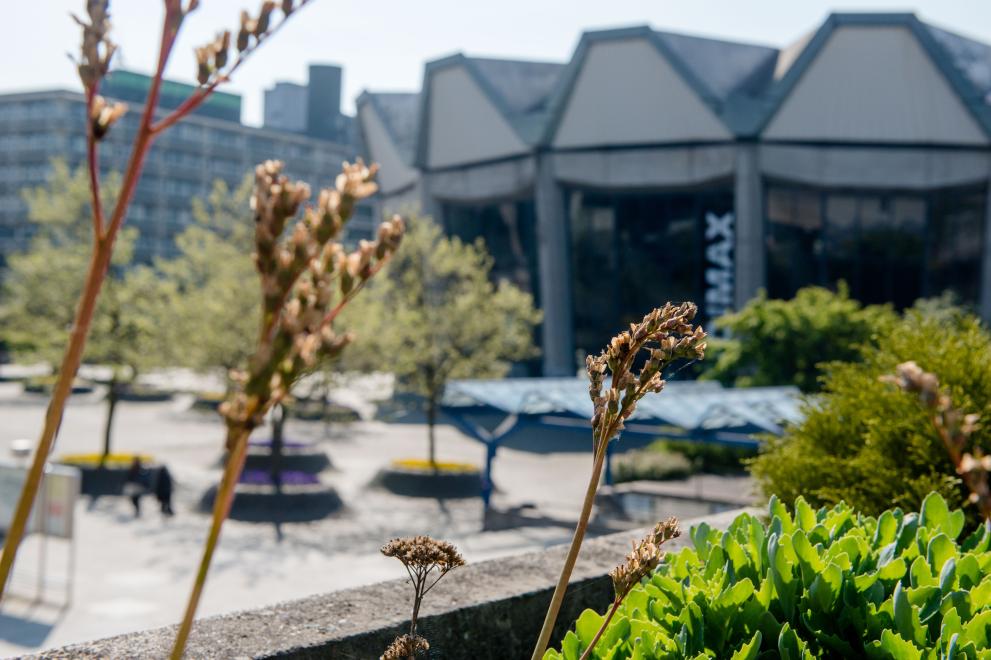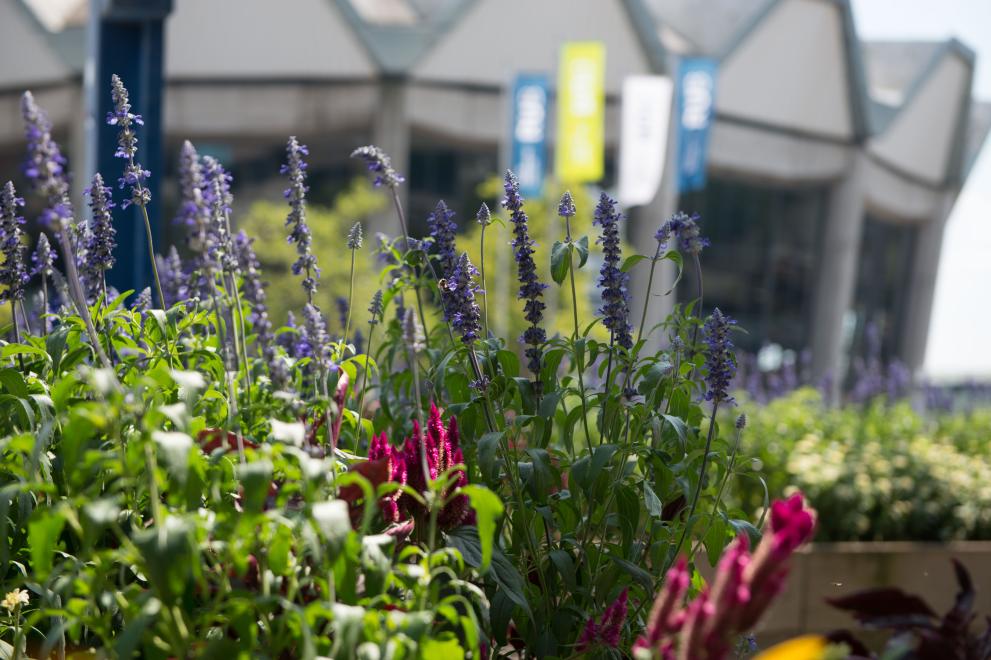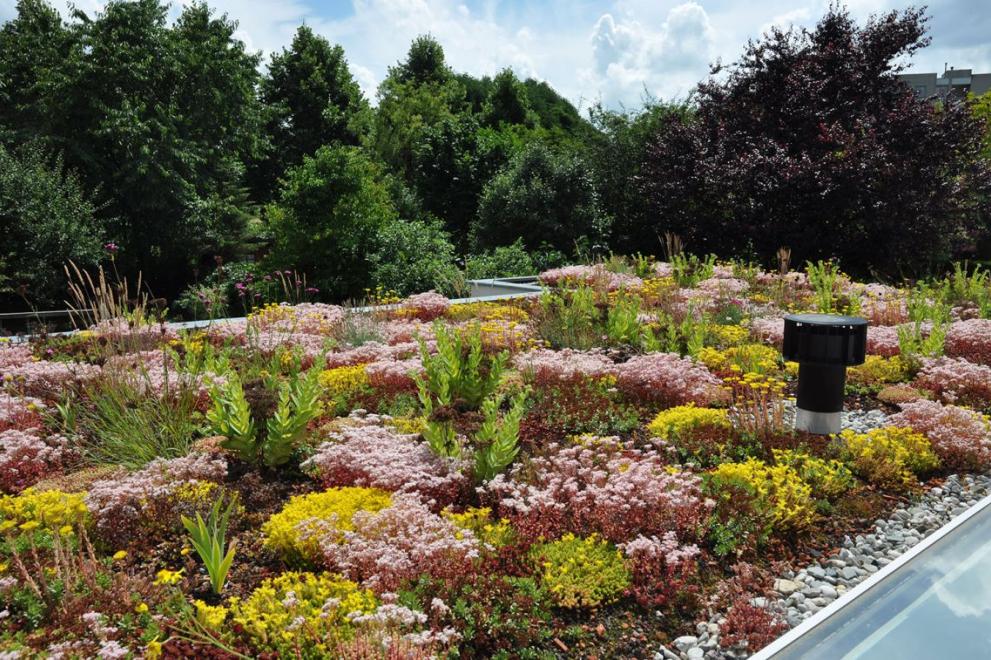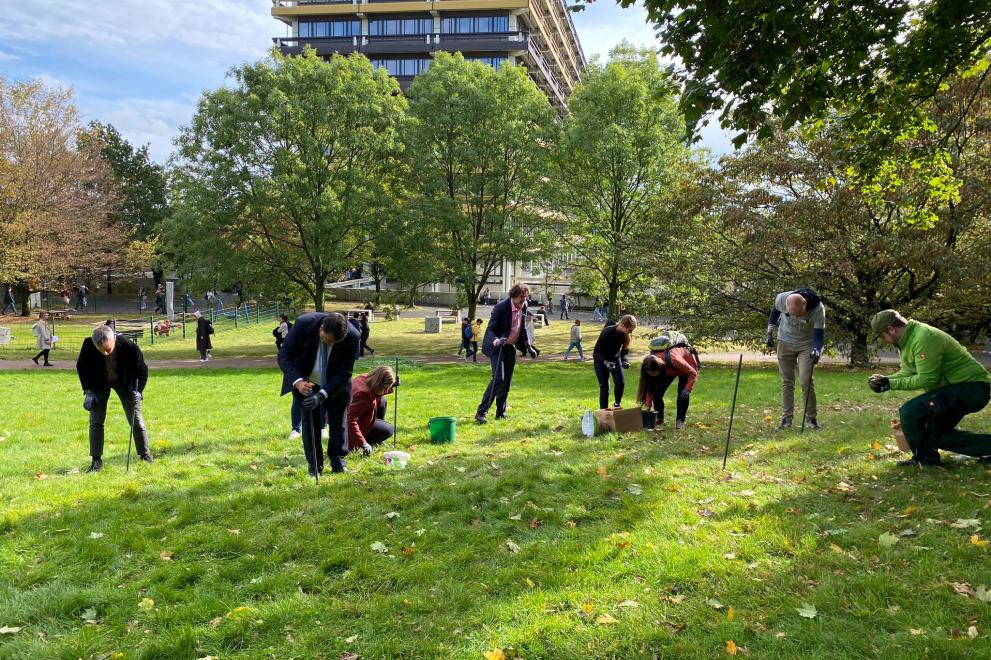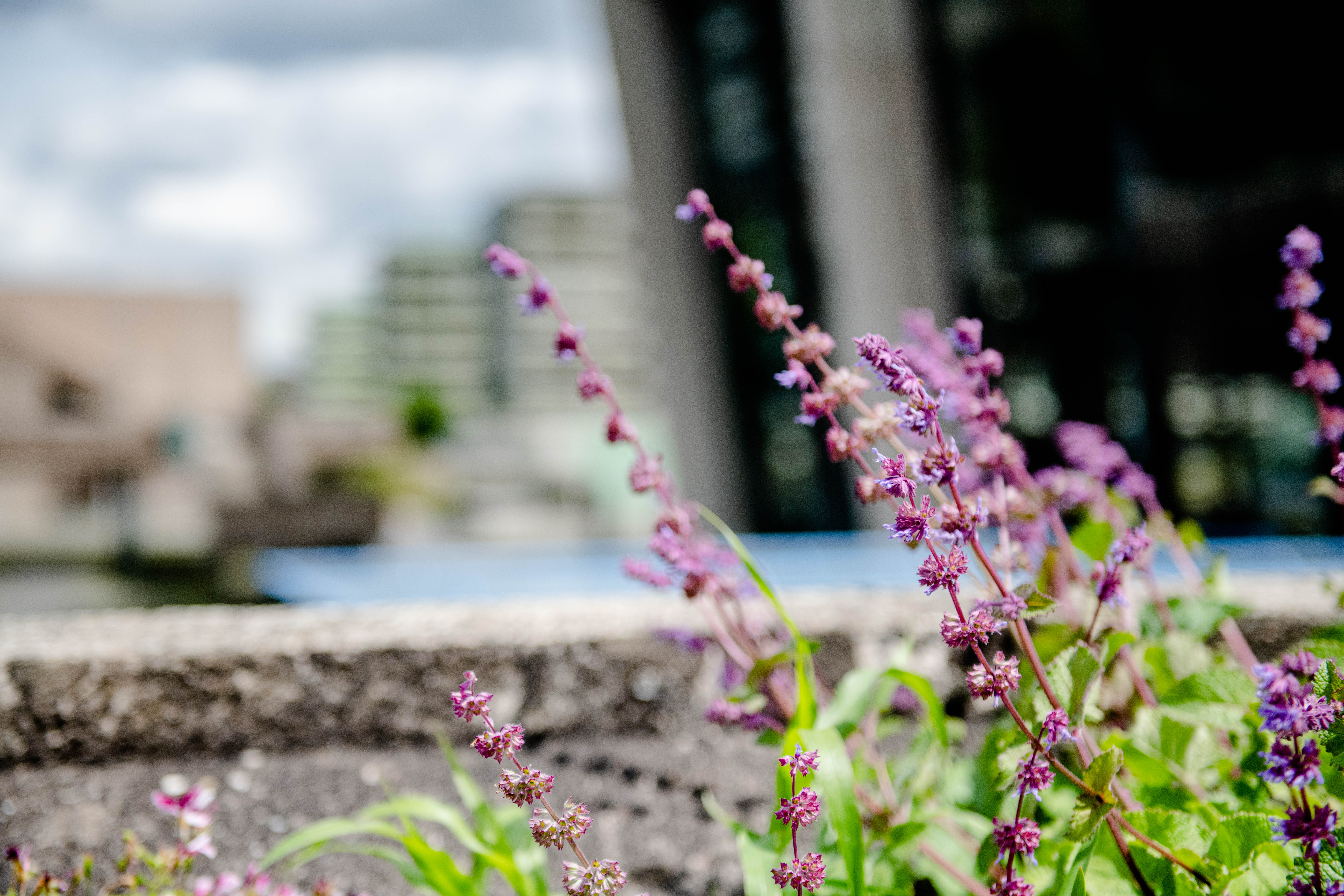
CampusGrün, a team from the Bochum Botanical Gardens, is responsible for maintaining the approximately 27 hectares of vegetation on the campus and the outdoor areas of the Ruhr-Universität Bochum. The team consists of eight employees: a foreman, five gardeners from different disciplines and two helpers.
